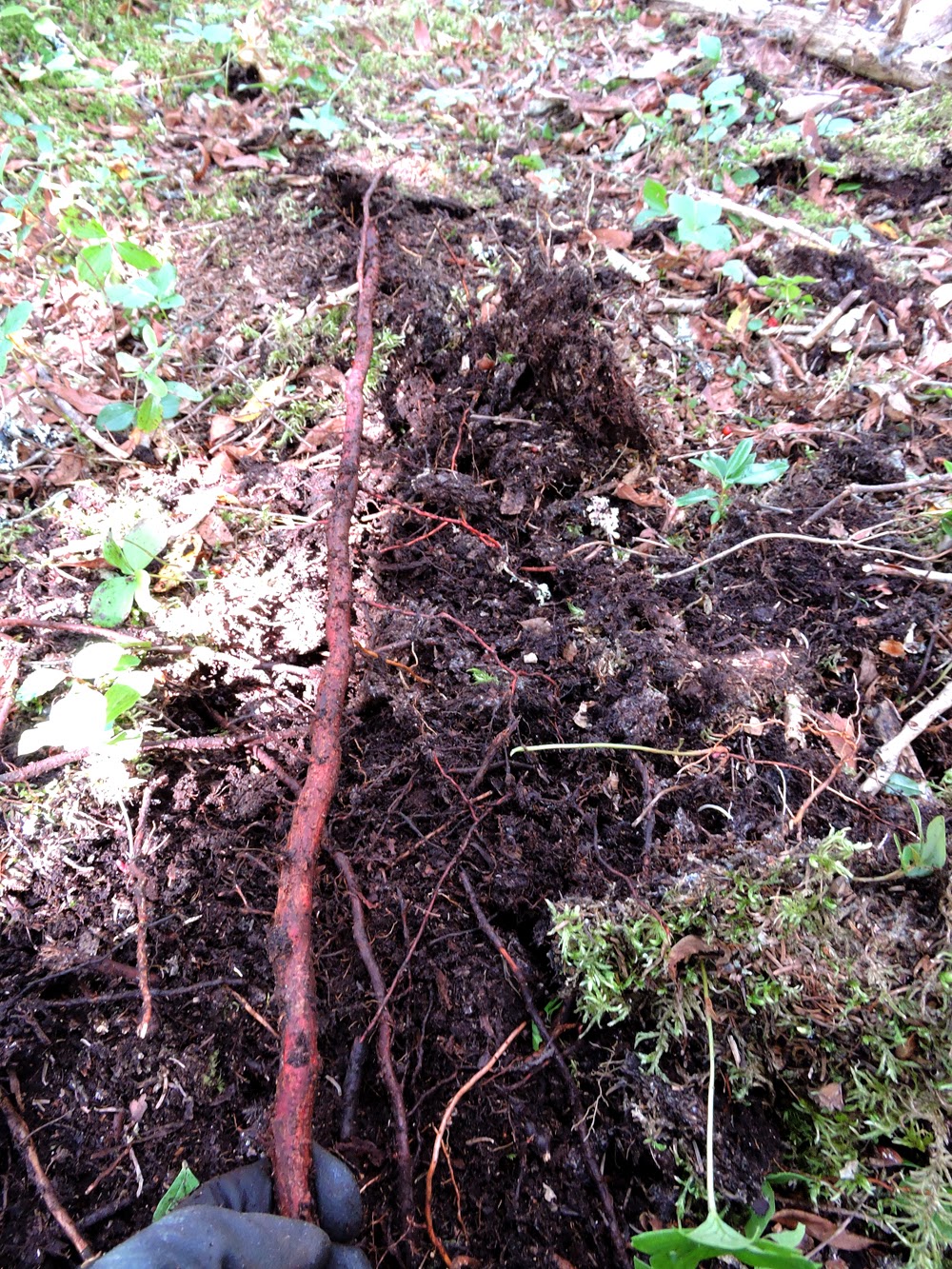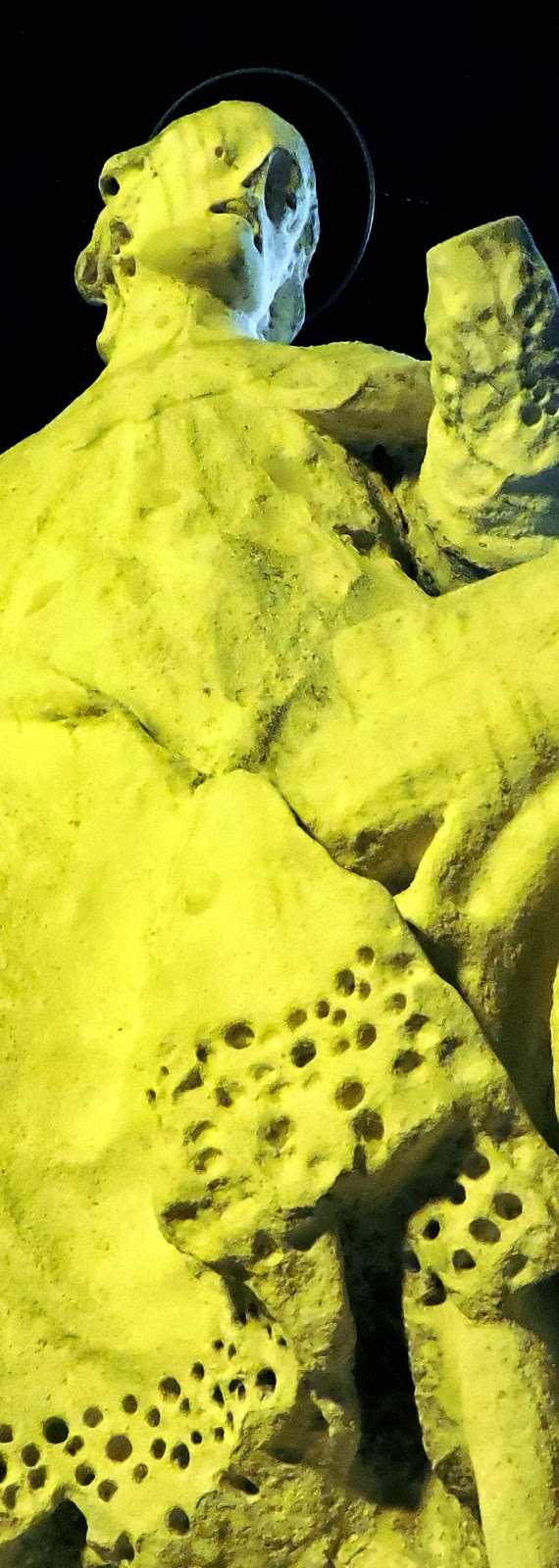Over the summer I exchanged a few e-mail with a fellow in Ireland named Claidhbh Ó Gibne who researches and builds traditional skin currachs. He's undertaken an ambitious project to construct a larger ocean going vessel built using the same principles as the smaller currachs. We know that Ireland's Neolithic inhabitants were part of a larger sphere of contact with Europe, but what do we know about their methods for making sea voyages 5000 years ago? I asked him about his project:
Plans and Profiles #20. Claidhbh Ó Gibne Experimenting with Neolithic Watercraft in Ireland
1) Tell me a little bit about your project.![]() |
| The Bovinda on the water |
I have always been intrigued with the Stone Age, perhaps its because I have lived in an area where, 5,000 years ago, a great complex of burial chambers was built - known as Newgrange. This neolithic passage tomb culture travelled across from Europe to Ireland before the era of metal. They then continued to voyage northwards, settling in Orkney, north of Scotland where they strove to leave a legacy to their very existence in the form of a great passage tombs. The elephant in the room of course is the sea that lies between all the these countries and as a lure it was just too exciting not to bite. The other aspect of this, is the human story that tells of how we developed as a civilisation once we obtained a manageable food source, namely - the cow, which allowed us expand to the further corners of the world. This is what inspired the Newgrange Currach Project: the construction of a wicker framed, skin-covered boat used by mariners in prehistoric times. We plan to recreate ancient voyages that would have been undertaken by our ancestors over five thousand years ago. This 36 ft leather boat, Bovinda, was built as much as a trophy to salute human endeavour.while at the same time, as an acknowledgement that the cow today, is seen reluctantly as an archaic form of food production. Perhaps it symbolises the end of an era on the human journey and the beginning of this new voyage we seek to begin, that of renewal. (Hope that's not too deep!!)
2) How did you become interested in this particular problem?The area where I live, along by the river Boyne, was one of the last places where woven skin boats were made to fish salmon, surviving on our river until as late as 1961, so I always had an interest in making these craft and reintroducing them onto the river. The question that all the archaeologists pose when talking about the tomb builders, is: How did our Neolithic ancestors transport such large stones from locations along the coastline which they used to ornate their tombs. When weaving our small traditional river boats, it became obvious to me that any shape or size could be made using this traditional method, and therefore I began to experiment with them.
3) Has your project changed since you began?![]() |
| Bovinda sea trials |
The swings and roundabouts associated with any project like this are so horrendous, that no one would have taken it on if they had known in advance. To answer whether my project has changed, yes...like a contortionist's performance out on stage, but like all good shows it worked its self out in the end. I would have liked to have used more raw hide in the construction and perhaps have had velum for the sails. A lot more experimentation is needed on leather tanning, especially natural sleeves of the lower legs of animals. I would have liked for the boat to have been smaller and lighter but I have had to add in a lot of extra support boughs due to its size. It quickly became apparent that the boat was to be double in size and have half the work force - as I said swings and roundabouts! The project was initially to be a woven imitation of the 36 foot Colmcille that is kept by the Causeway heritage group in Co Antrim. But a film documentary maker's imagination combined with a sailor's appetite always for more saw the project grow incrementally out of all proportion, least to say neither sailor nor film maker were there at the end.
4) If you could ask a Stone Age mariner one question, what would it be?I would ask him (or her) if they tonged or sewed the leather or skin onto their boats. If they tonged, I would ask if they used bird bone flutes to offer the rawhide thread through the holes? Or if they sewed I would ask what materials and tools was most successful for sewing with and if they ever came across an alternative to black spruce roots, as we don't have that over here! Ooops - think that's more than one question!! Basically, I would quiz them about their sewing techniques....I spent many many months experimenting with different materials and stitching methods before I settled on one!
5) Has your research taught you anything about yourself ?Yes it has! I realise now how much I love a challenging journey, not too bothered about the destination, just the journey getting there!
Also I learnt that having no money for long stretches of time can hurt the hell out of your dignity, but not your pride!
6) How do you unwind when you need to get away from your research?![]()
I like to unwind by playing music on my fiddle! And as this seems to wind everyone else up in the morning, I normally retire to the out doors with my cup of tea and play to the blackbirds. I like to meet up with friends and have fun on the river in our little leather boats, and the odd evening I get to play music with my sons and daughter who, being very good musicians manage to put up with me...only because I'm their Dad!!
Where I live, there are some beautiful walks at my doorstep and a dog who will always remind you. When the house is quiet, or when I manage to find a little corner for myself away from the busy bustle of the day, I love wood carving and I'm big into cultural heritage so carving Celtic design with knots as deep as I can make them is my favourite. I like to do illustrations and to draw Celtic designs which usually turns into a carving after some time, or yes, you got it, drawing detailed sketches of the boat. I get great enjoyment out of writing too!
7) What archaeological discovery or project do you wish you could have been part of?![]()
Don't think a leather boat has ever been found but if ever there is such a find, thats where I would like to be, looking for answers to many of my questions, seeing how close I was to the real McCoy! So I would like to be on an Archaeological excavation working on a dig that uncovered a sea-going leather boat somewhere along the coast, in a nomadic settlement along side some middens!
8) What's next for you?By next March, weather permitting of course, we hope to take Bovinda out again. The leather square sail is at present being improved upon and time permitting I will have a small leather lateen sail to experiment with too.. The oars of alder poles are at the moment being bent in the opposite direction in an attempt to straighten out the kinks. and I've had some time to experiment with two new quarter rudders made of elm and oak. So a lot going on and a lot to do -
9) What books or websites would you recommend if people want to learn more about your area of interest in general? Or your project in particular?Of course I will recommend my own book for reading about skin currachs (Boyne Currach - from beneath the shadow of Newgrange, published by Fourcourts Press 2012). Other books that I would recommend would be Facing the Ocean by Barry Cunliffe, Sinews of Survival and Bark Canoes and Skin Boats of North America. With website we have a website
www.boynecurrach.com and a face book page too! when I was researching about the boat I found that
PaleoPlanet was the most helpful forum with many subscribers only to willing to give advise and suggestions.
Are you part of an archaeological research project or perhaps you know an archaeology student who could use a boost in exposure. I'd love to hear your recommendations for future interviews. elfshot.tim@gmail.com






























